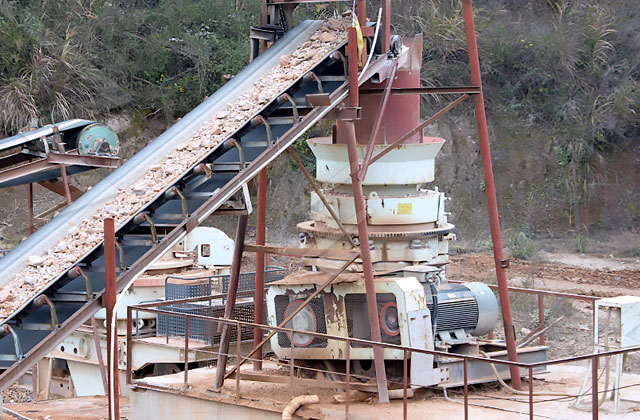A limestone processing plant typically involves several stages, including crushing, grinding, screening, and classification. Among these stages, the primary crusher plays a crucial role in the overall process. I will discuss the importance of the crusher in a limestone processing plant, its working principle, and the various types of crushers commonly used.
A limestone processing plant crusher is a machine designed to reduce large rocks into smaller rocks, gravel, or rock dust. It is used to crush the limestone into specific sizes for further processing or for end use. The primary crusher is the initial stage of the limestone processing plant and is usually the first step in the entire production line.
The primary crusher in a limestone processing plant typically operates at a high capacity and handles large rocks. It is designed to accept limestone with a maximum size of several feet and reduce it to a size suitable for further processing. The primary crusher employs mechanical force to break the limestone into smaller pieces. This is usually achieved through compression, where the rocks are squeezed between two surfaces. The crushing process generates a lot of force, and the crusher must be robust enough to withstand this force without breaking down.

There are several types of crushers commonly used in limestone processing plants. The most common type is the jaw crusher, which operates by compressing the limestone between a fixed jaw and a movable jaw. Another commonly used type is the impact crusher, which utilizes the principle of rapid impact to crush the limestone. Impact crushers can be either horizontal shaft impactors (HSI) or vertical shaft impactors (VSI), depending on the orientation of the impact bars or hammers. Both jaw and impact crushers are commonly used for primary crushing in limestone processing plants.
In addition to jaw and impact crushers, cone crushers are also used in some limestone processing plants. Cone crushers operate by squeezing the limestone between a mantle and a concave, allowing the materials to be crushed progressively as they move downward in the crushing chamber. Cone crushers are often used for secondary or tertiary crushing in limestone processing plants, where further reduction in size is required.
The choice of crusher type in a limestone processing plant depends on various factors, including the desired output size, the hardness of the limestone, the abrasiveness of the material, and the available budget. Each type of crusher has its advantages and disadvantages, and the selection should be made based on a careful evaluation of these factors.
In conclusion, the crusher is an essential component in a limestone processing plant. It is responsible for reducing the size of large rocks to a size suitable for further processing or end use. The primary crusher operates at a high capacity and must be robust enough to handle the force generated during the crushing process. Different types of crushers, such as jaw crushers, impact crushers, and cone crushers, are commonly used in limestone processing plants, and the choice of crusher depends on various factors. Overall, the crusher plays a vital role in the limestone processing plant by facilitating the size reduction of the raw material.
